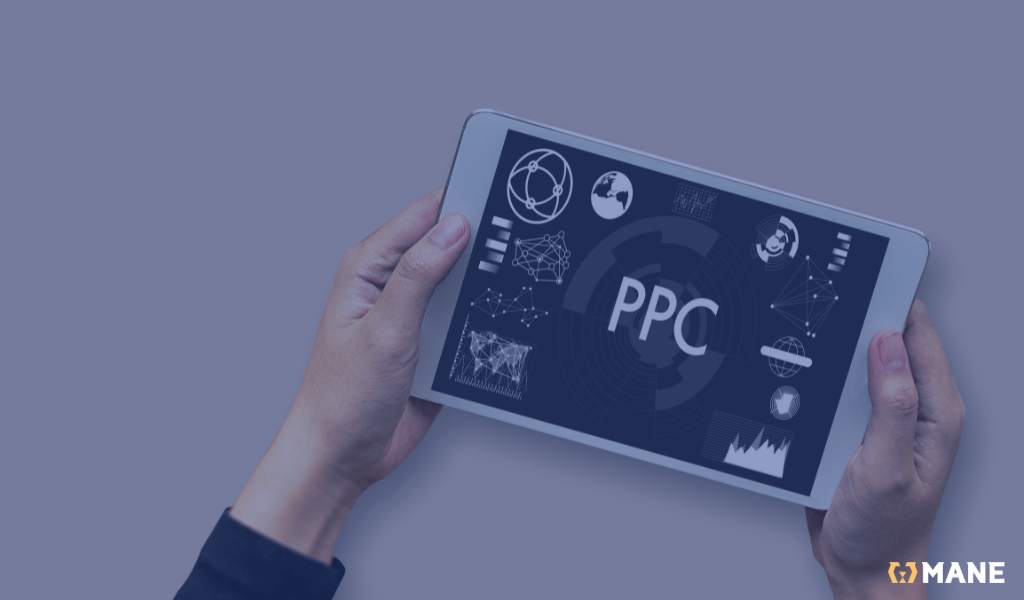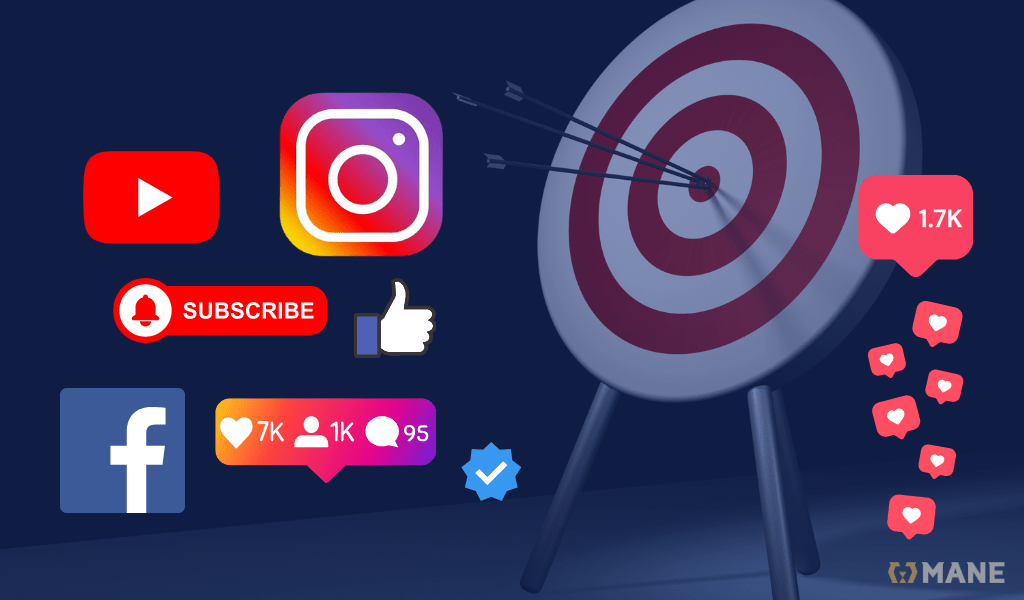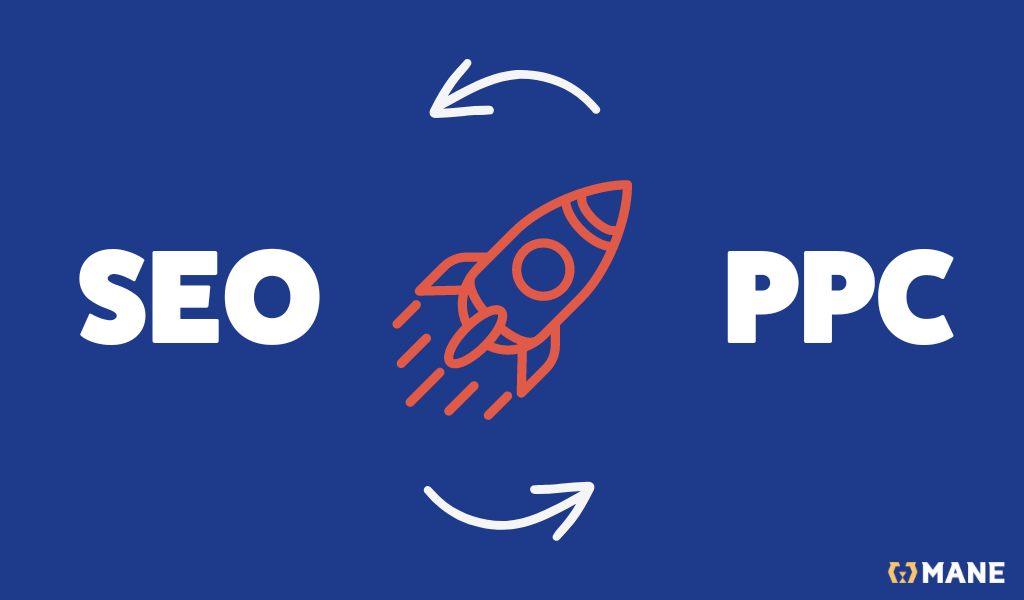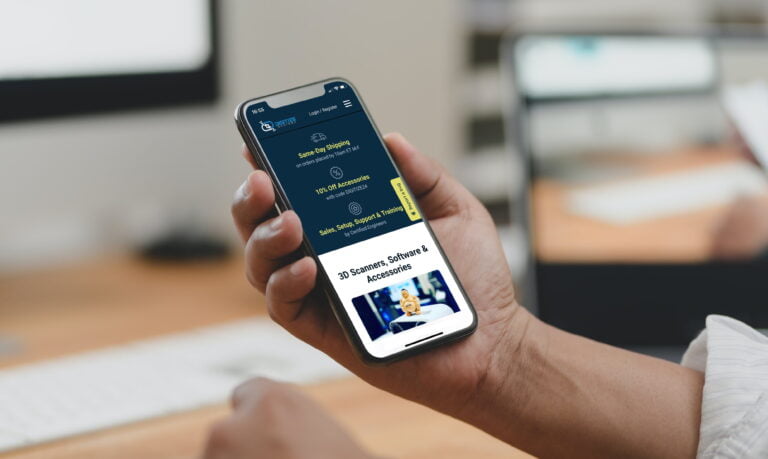
2024 eCommerce PPC Management Best Practices
Introduction
The marketing world is constantly changing, and marketers and business owners need to stay updated with the latest trends and innovative practices to stay ahead of the competition. Effective management of eCommerce PPC (Pay-Per-Click) campaigns is crucial when the goal is to score quick gains and maximize the return on investment (ROI) from advertising.
It involves understanding the market’s intricacies, analyzing your target audience’s behavior, and strategically positioning your ads to capture their attention. When approached correctly, PPC can be a powerful digital tool to generate leads and sales, driving significant traffic to your eCommerce platform.
Despite its potential, only about 45% of businesses use pay-per-click advertising. It presents a significant opportunity for those willing to go the PPC advertising route.
With 2024 rolling, you need to ensure you’re up to speed with PPC’s latest best practices. Just keep reading to find out more.

What is eCommerce PPC Management?
E-commerce PPC (Pay-Per-Click) management is a process of optimizing digital advertising campaigns to boost sales and improve conversions. The process involves:
- Selecting relevant keywords that potential customers might use when searching for products or services online.
- Setting up and managing PPC ad campaigns across various digital platforms such as Google Ads and social media channels where your target audience spends significant time.
- Managing bids for ad placements strategically. It ensures that your ads appear in prominent positions without overspending, which optimizes your visibility and potential for clicks.
- Analyzing performance data is a crucial component of PPC management. It includes scrutinizing metrics such as click-through rates, conversion rates, and overall ad spend efficiency to refine and enhance campaign performance continuously.
The main aim of eCommerce PPC management is to drive targeted traffic to your business website. It requires a strategic approach that balances aggressive marketing with cost efficiency and continuous monitoring.
By closely monitoring campaign performance and making data-driven adjustments, businesses can maximize their ROI, ensuring that every dollar spent on PPC contributes to their growth and profitability in the digital marketplace.
Is eCommerce PPC Management Hard?
eCommerce PPC management can be challenging and requires significant time and money. The complexity lies in the initial setup and the ongoing effort to determine the advantages and disadvantages of various marketing platforms.
As said, the digital marketing landscape constantly changes, with search engine algorithms and market dynamics evolving continuously. That’s why advertisers and business owners need to stay vigilant and adapt their strategies accordingly.
Sometimes, PPC campaigns fail without an apparent reason, making it crucial for marketers to analyze and improve their approaches continuously. Despite these challenges, with the right expertise and approach, successful PPC management is bound to produce great results for your eCommerce business.
How Does eCommerce PPC Management Work?
E-commerce PPC management operates within an auction-based system. Businesses bid against each other for keywords relevant to their products or services. The higher the bid, the greater the chance of securing the top position for a specific keyword for their ad on the search engine results page (SERP).
Naturally, ads that appear higher on the SERP get greater visibility, significantly increasing the likelihood of clicks and affecting its click-through rate (CTR). This system emphasizes the importance of strategic bidding and keyword selection in PPC management to improve ad visibility and effectiveness.
Since search engines like Google are primarily set to provide solutions to users’ problems and do not simply offer top positions to the highest bidders, advertisers need to invest a lot of effort to cater to various PPC ranking factors assessed by a complex algorithm, ultimately determining the Ad Rank. Some of these factors include:
- Landing Page Quality,
- Ad Relevance,
- Historical CTR,
- Keyword performance,
- Account performance,
- Quality Score,
- and other factors.
14 eCommerce PPC best practices for 2024
Besides audience targeting, using relevant keywords, writing benefit-driven copy, and standard PPC practice, we are delving into the current eCommerce PPC management best practices for 2024.
These may be suited for paid advertising beginners, small business owners, marketing professionals, or those who maintain a basic knowledge of PPC and wish to gain further info.
Select the Right PPC Platform
Firstly, choosing the right PPC platform is crucial for the success of your eCommerce advertising campaigns. The selection includes two types of advertising channels:
- Search engines like Google Ads and Bing Ads
- Social media platforms such as Facebook, Instagram, and YouTube
The choice of the platform mainly depends on where your target audience spends their time.
Different advertising platforms have distinct target audiences with varying purchase intentions, and there may be better approaches than using the same set of products across all sales channels.

Search Engines
Platforms like Google are search-based, where users actively look for products based on specific criteria, such as size, color, or brand. Google Ads PPC has a vast reach and is perfect for businesses that use paid advertising to attract a broad audience.
In contrast, Bing Ads PPC marketing can be more effective for reaching demographics aged 45+ and industries with less competition, such as finance, healthcare, travel, etc.
Social Media Platforms
Investing in social media ads is a top pay-per-click trend for 2024. Social media platforms like X (formerly Twitter), Facebook, or TikTok are known for facilitating highly targeted outreach, allowing advertisers to pinpoint audiences based on interests, demographics, and behaviors.
However, platforms like Facebook, Instagram, or TikTok do not primarily focus on buying products. Thus, you should create and feature different product sets for these two PPC advertising channels.
Visually appealing products, like handmade jewelry or bags, can inspire social media users but are not so often sought out on search engines.
On the contrary, high-complexity products, such as electronics, are a perfect match for Google and Paid Search, where people search for a specific product.
Differentiate product sets between platforms.
In 2022, 55.84% of online retailers who advertised on Google and Facebook had a different number of products included in their Google Shopping and Facebook feeds. It indicates that advertisers consider various factors when reviewing the product set for each platform.
In 2024, when deciding on a product set for each channel, PPC marketers should consider:
- the advertising goal
- audience intent
- and the visual build of the ad.
This way, they can adjust the feed attributes, such as images or titles, and the product sets successfully.
Ensure a relevant landing page.
For 2024, it’s imperative to have a landing page that is customized and relevant. Whether they’re coming from Google or Facebook, when customers click on your PPC campaign ads, they should be directed to your eCommerce website.
If potential customers are confused or unsure about your site, they may leave quickly, so it’s crucial to provide them with a landing page that offers a clear and straightforward shopping experience.
Whether you’re running paid search ads or social media PPC ads, your landing page must offer the best experience to keep your audience from going to a competitor instead.
Here are some tips you can follow to create an optimized landing page and improve your marketing performance:
Match Landing Page Content with Ad Message
Ensure that your landing page’s headline, key benefits, and visuals directly correspond to the message and offer in your PPC ad. Keep the focus. For example, if it’s an ad for a dumbbell, don’t take the user to a page with all kinds of fitness equipment. Consistency helps maintain the user’s interest and trust from the ad click-through to the landing page.
Use a Clear and Compelling Call to Action (CTA)
Your CTA should stand out and tell users exactly what you want them to do, whether it’s to “Buy Now,” “Sign Up,” or “Get a Free Trial.” Make it large and legible, and use contrasting colors to draw attention.
Use High-Quality Visuals
Incorporate professional-quality images or videos relevant to your product or service. Visuals can help explain what you’re offering more effectively than text alone.
Include Trust Signals
Add testimonials, reviews, certifications, or security badges to your landing page to build trust with your audience. Social proof can significantly influence decision-making.
These can also improve your site’s E-E-A-T signals (Experience, Expertise, Authoritativeness, and Trustworthiness), an important SEO factor.
Implement Tracking
Use tools like Google Analytics and incorporate UTM parameters to track how visitors interact with your landing page. This data is invaluable for understanding user behavior and refining your page for better PPC marketing performance.
Make the landing page informative but concise.
It can be tempting to share all the important information about your product or service when trying to convince someone to buy it. However, providing too much information can be overwhelming for your audience. Therefore, it’s important to be concise and focus only on the essential details when creating landing pages.

Use both search and shopping PPC ads.
Expanding your marketing efforts to include both Google Search ads and Google Shopping ads is a strategic move that can significantly enhance your product’s visibility throughout the buyer’s journey.
Differences Between Search and Shopping Ads in Google
Google Search Ads are text-based and appear on search engine results pages based on the keywords a user searches for. These ads provide flexibility in ad copy, allowing advertisers to craft tailored messages and calls to action.
Google Shopping Ads are more visually oriented, displaying product images, prices, and the store name directly in the ad. The product data submitted to Google Merchant Center triggers these ads, not just keywords, making them ideal for showcasing products directly to interested users.
Here’s why incorporating both types of ads is beneficial:
Enhancing Product Visibility
Investing in both ad types broadens your reach. Thanks to their visual appeal and direct product information, Google Shopping ads capture the attention of users who are further along in the buying process and ready to purchase. On the other hand, Google Search ads are effective for reaching users in the earlier stages of their journey when searching for information or comparing different solutions.
Optimizing Strategy Beyond Branded Queries
Relying solely on search ads for branded queries limits your visibility to users already familiar with your brand. Incorporating Shopping ads can capture interest from users in the market for your products who might not be searching for your brand specifically.
Before Implementing Tactics
Configure your reporting tools to measure both ad types’ performance accurately. Reviewing at least six months of historical data before optimizing an existing campaign is crucial for understanding trends, seasonality, and previous performance.
Historical insight and ongoing performance measurement are essential for identifying growth opportunities and refining your marketing strategy to maximize ROI.
Use Dynamic Retargeting
The best PPC marketing strategy for your eCommerce needs to include a remarketing campaign. As much as people may find it annoying, dynamic retargeting is a definite best practice for any online retailer using Google Ads.
Remarketing ads are tailored based on the specific products viewed by the user. It makes them highly effective for increasing brand awareness and enhancing eCommerce performance.
Incorporating it into your Google Shopping ads strategy can significantly boost your ROI.
Google Shopping’s dynamic retargeting feature takes this a step further by automatically presenting responsive display ads to visitors who have interacted with your site but left without purchasing.
Since they are personalized, they are more relevant to the user, increasing the likelihood of drawing them back to your website to complete their purchase. It’s about more than recapturing lost sales. It’s a strategic marketing approach to keeping your brand and products on the top of the mind for potential customers who have already shown an interest in what you offer.
Optimize Your Strategy for Mobile
Understand the different behaviors of mobile shoppers compared to desktop users, as it’s essential for tailoring your eCommerce strategy. Mobile users usually have more impulsive buying patterns, seek faster loading times, and prefer streamlined navigation.
Despite these differences, many eCommerce businesses lack a specific marketing strategy for engaging mobile users, sometimes reducing mobile bids to manage ad spend. However, this approach can be shortsighted and wasteful.
A more effective PPC strategy involves analyzing the historic mobile-only Return on Ad Spend (ROAS) to make informed bidding decisions. Additionally, segmenting mobile customers using negative keywords can help target more precisely, avoid irrelevant traffic, and enhance the overall effectiveness of your ads.
Adopting targeted strategies, catering specifically to the mobile audience, and ensuring a better user experience ultimately drive higher PPC conversions from mobile users.

Make use of seasonal opportunities.
It’s great for seasonal businesses to adjust their PPC bids according to changes in demand. By bidding aggressively during high-demand periods, businesses can secure prime ad placements and increase visibility.
On the other hand, reducing bids during slower seasons can help conserve advertising spending while maintaining brand visibility. To implement this marketing strategy effectively, analyze historical performance data and market trends to accurately forecast changes in consumer behavior.
Businesses can incorporate seasonal promotions and customize ad copy to reflect upcoming events to make their offer more appealing. This approach attracts more attention and encourages engagement.
You can bid on product SKUs, part Numbers, and model numbers.
Focusing on specific product identifiers such as SKUs, model numbers, and replacement part keywords can significantly improve the effectiveness of your PPC marketing strategy.
Even though these keywords may have lower search volumes, they often lead to a higher conversion rate because they attract users with a clear intent to purchase.
For example, a user searching for “best gaming laptop” may still be in the early stages of research and decision-making, whereas someone searching for a specific model, like “HP Omen 16-xf0002nm 8D6U0EA,” is likely ready to buy now.
You can use Dynamic Keyword Insertion to the headline of a text ad and the URL and keyword-level final URLs to bring the user to the exact product they were searching for.
Allow Google to manage your PPC campaign.
Google’s Performance Max (PMax) campaigns offer a comprehensive strategy that automates ad placements across all Google platforms. It can often simplify campaign management for advertisers.
However, PMax campaigns may take time to ramp up performance and spending.
Another trade-off of using PMax campaigns is the lack of control over specific ad placements, which might concern advertisers who are particular about their brand’s visibility.
The PMax algorithm benefits from data, so campaigns with more SKUs in the product feed perform better.
Before reallocating your advertising budget to PMax, carefully evaluate its fit with your marketing goals and readiness for its comprehensive, automated management style.
Pros of PMax campaigns:
- Automated Optimization Across Platforms: PMax leverages Google’s AI to optimize PPC ad placements automatically across Search, Display, YouTube, and more, maximizing reach and efficiency.
- Simplified Campaign Management: By consolidating multiple campaign types into one, PMax reduces the complexity of managing separate campaigns for different Google platforms.
- Enhanced Audience Targeting: Utilizes advanced machine learning to target audiences more effectively based on their likelihood to convert, improving targeting precision.
- Increased Conversion Opportunities: By accessing all Google ad inventories, PMax increases the chances of displaying your ads to potential customers at optimal times.
- Data-Driven Performance Insights offers comprehensive analytics and performance insights, enabling advertisers to understand campaign effectiveness and make data-informed decisions.
Cons of PMax campaigns:
- Limited Control Over Ad Placements: Advertisers should be cautious of the reduced ability to specify where ads will appear, which can impact brand positioning and visibility.
- Broad Targeting: PMax’s extensive reach might include less relevant audiences, potentially diluting the effectiveness of highly targeted advertising strategies.
- Data Privacy Concerns: The extensive data collection and automation involved in PMax marketing campaigns necessitate a careful approach to data privacy and compliance with regulations.
- Dependence on Machine Learning: The success of PMax heavily relies on machine learning, requiring advertisers to provide sufficient data and time for the system to optimize effectively, which can be a slow process.
- Budget Management: There’s a risk of rapid budget consumption without immediate visible returns, especially during the initial learning phase, requiring advertisers to monitor spending closely.
Be careful when considering automating your PPC marketing campaigns in 2024 and approach the matter strategically. It’s vital to conduct ample testing and experimentation before committing your entire ad spend to these campaign types.
Use Google AdMob to Get More from In-App Ads
In 2024, Google AdMob has become increasingly popular among businesses looking to use in-app advertising. This powerful tool allows advertisers to optimize their ads within mobile applications, which enhances the potential for better results.
AdMob offers real-time bid optimization and a variety of ad formats that can be customized to match different needs and user experiences. It also includes detailed reporting features that provide advertisers valuable insights into ad performance.
These insights are crucial in making data-driven adjustments to campaigns, ensuring that advertisers can maximize their results and achieve their marketing objectives more efficiently.
Use First-Party Data to Improve Campaigns
E-commerce businesses often use third-party data to enhance their understanding of potential customers, improve targeting for marketing campaigns, and identify new market opportunities.
In 2024, with increasing privacy concerns and regulatory changes (like GDPR and CCPA), reliance on third-party data is becoming more challenging, pushing businesses towards leveraging first-party data they collect directly from their interactions with customers.
First-party data is information gathered directly from a business’s audience and campaigns, such as website interactions, app usage, and customer feedback. On the other hand, third-party data is sourced from external providers and is not collected from direct interactions with a company’s brand.
By utilizing first-party data, businesses can gain in-depth insights into their audience’s behaviors, preferences, and needs. This direct information line lets a business personalize advertising and effectively approach its target audience.
How to collect first-party data?
- Customer Accounts: Encourage users to create accounts on your eCommerce platform to gather data on their purchase history and preferences.
- Email Sign-Ups: Collect email addresses through sign-ups for newsletters or exclusive offers, providing insights into customer interests.
- Surveys and Feedback Forms: Use surveys and feedback forms to collect direct customer input about their preferences and experiences.
- Website Analytics: Implement tools to track user behavior on your site, such as page visits, dwell time, and click-through rates.
- Social Media Engagement: Analyze interactions on your brand’s social media profiles to understand customer interests and sentiment.
Here are the benefits of using first-party data as an eCommerce business:
- Enhanced Personalization: First-party data enables advertisers to tailor their messaging and offers to meet their audience’s preferences and behaviors.
- Improved Targeting Accuracy: Utilizing direct insights from your audience ensures more precise targeting, reducing ad waste and increasing campaign effectiveness.
- Increased Customer Loyalty: Personalized experiences based on first-party data foster a stronger connection with the audience, enhancing brand loyalty and repeat business.
- Better Compliance with Privacy Regulations: Relying on first-party data helps ensure adherence to privacy laws and regulations, minimizing legal risks and building customer trust.
Beware of click fraud.
Did you know that there is a forecast saying that the cost of click fraud will grow from $19 billion in 2018 to $100 billion in 2024? Click fraud is a harmful activity involving bots or malicious software mimicking legitimate users who click on PPC ads. This fraudulent activity can drain your advertising budget without yielding real customer engagement.
It is not uncommon for businesses to engage in click fraud to harm their competitors. Therefore, closely monitoring your advertisements is paramount to prevent falling victim to click fraud.
Although Google implements measures to combat click fraud, these protections are not foolproof. Advertisers should actively oversee their PPC campaigns, learn to spot irregular traffic patterns, and take proactive steps to mitigate potential fraud.
Check out Google’s resources to help protect the validity of your ads. Being aware and taking prompt action is vital to protecting your investments from the impacts of click fraud.
How to spot click fraud as an advertiser?
- Unusual Traffic Spikes: Monitor for sudden, unexplained increases in ad clicks or impressions, which could indicate fraudulent activity.
- High Click-through Rates with Low Conversion: An abnormally high click-through rate (CTR) coupled with low conversion rates can signal click fraud.
- Geographic Irregularities: Receiving clicks from locations where you do not market your products or services might suggest fraudulent clicks.
- Repetitive Clicks from the Same IP: Multiple clicks on your ads from the same IP address within a short timeframe could indicate bot activity.
- Short Session Durations: If analytics show a high volume of clicks with very short or no session duration, this may be a sign of bots.
- Click Gaps: A regular click pattern may suggest automated clicking rather than human interaction.
- Discrepancies in Conversion Data: Comparing click data with conversion data can help identify inconsistencies indicative of click fraud.
- Investigate Click Sources: Analyzing the sources of your ad clicks can help identify if they are coming from suspicious or irrelevant sites.
Integrate PPC and SEO

Integrating PPC (Pay-Per-Click) and SEO (Search Engine Optimization) strategies can significantly improve your online visibility and search engine ranking.
When you optimize both for the same keywords, your brand can appear twice in the same search area, increasing your chances of catching user attention and dominating the search engine results pages.
Here are three important benefits of combining PPC and SEO strategies in 2024:
- Cost Efficiency: Effective SEO can reduce reliance on paid traffic over time, lowering overall marketing costs. PPC can offer quick wins and targeted traffic during the SEO ramp-up period.
- Increased Conversion Rates: Leveraging both PPC and SEO strategies allows for testing and optimization across different channels, leading to higher conversion rates as you refine your approach based on real-world data.
- Competitive Advantage: Using PPC and SEO together allows you to cover more ground than competitors who may be focusing on just one strategy, giving you an edge in attracting and converting search traffic.
PPC and SEO efforts data can provide deeper insights into your audience’s behavior and preferences, enabling you to make more informed decisions across both channels.
A/B testing with PPC ads is an attractive strategy offering immediate feedback on keyword effectiveness and user engagement. These insights can be invaluable in refining your overall SEO strategy.
Great SEO boosts the Quality Score of your ads.
The Quality Score in Google Ads is a crucial metric that evaluates the relevance and quality of your ads, keywords, and landing pages. It influences your ads’ position on the search results page and the cost per click (CPC), with scores ranging from 1 to 10, where a higher score indicates better ad performance and potentially lower costs.
Good SEO services will improve the relevance and user experience of the landing page linked to your ads, which is a critical factor in determining the Quality Score.
Enhancing your site’s content, speed, and usability can lead to higher Quality Scores, resulting in more favorable ad positions and lower costs per click in Google Ads campaigns.
By adopting the synergistic approach, you can boost your online visibility and gain a comprehensive understanding of your target audience, leading to more effective and cohesive marketing strategies.
Don’t Forget about Dynamic Search Ads
Dynamic Search Ads (DSA) is a powerful tool by Google Ads, especially beneficial for businesses with extensive product inventories. The ad crawler scans your website and automatically generates ads that align with the content it discovers.
It helps bridge the gap between your offerings and potential customer searches. DSAs serve as an invaluable keyword research tool, uncovering queries you might have overlooked during the initial campaign setup.
To prevent overlap and ensure the efficiency of your DSAs, it’s recommended to add standard search keywords as negatives. This campaign type offers a low-budget and straightforward option for advertisers.
It requires minimal upkeep while running in the background. Dynamic Search Ads can significantly augment your advertising strategy, ensuring broad coverage and minimizing the chances of missed opportunities with minimal fuss.
Schedule Maintenance and Optimization
Pay attention to PPC campaigns, even if they’re performing well, as this leads to inefficiencies and specific missed opportunities. Continuous maintenance and optimization are crucial for sustaining a successful search strategy.
Regularly reviewing your Search Insights and Search Impression Share can help you understand your campaign’s reach and identify potential improvement areas. It’s crucial to watch for irrelevant searches that may consume your daily budget through unnecessary clicks.
Again, consider the impact of mobile search behavior and seasonal trends, as they can significantly affect the effectiveness of your campaigns. These aspects are essential for older accounts that may not have been updated to reflect current search trends.
Establishing a routine schedule for reviewing and adjusting your campaigns ensures that your search strategy remains dynamic, responsive, and aligned with your marketing goals.
Conclusion
Pay-per-click (PPC) advertising is an effective business strategy for reaching potential customers online and significantly boosting revenue in 2024.
Without proper management, companies risk wasting their ad budget and may find themselves questioning the effectiveness of their advertising efforts.
Knowing exactly which strategies to implement can be a hit-or-miss operation. Effective PPC campaign management utilizes data to make informed decisions and optimize PPC marketing campaigns for maximum returns.
By adhering to these 14 eCommerce PPC campaign management best practices outlined for 2024, businesses can optimize their online advertising efforts, ensuring they reach their target audience more effectively and achieve a higher return on investment.
For businesses seeking expert assistance in navigating the complexities of digital marketing, MANE Digital offers comprehensive services in Digital Marketing, Paid Advertising, SEO, and Web Design.
Leveraging our expertise, MANE Digital is dedicated to helping businesses maximize their online presence, drive targeted traffic, and enhance their digital marketing results in an ever-evolving online landscape.



